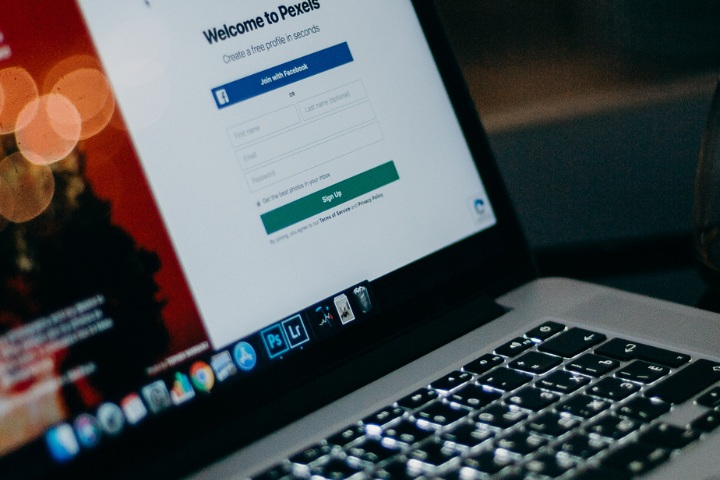Although Google Ads is still the gold standard, Facebook Ads are the best for brand awareness and where you can generate demand through interest-based targeting. Facebook Ads are also a good digital marketing tool for small to medium-sized businesses to increase their sales. As a tool, Facebook Ads can help you accomplish those goals, but you need the right strategy, or you could waste your money. This is where a Facebook ad support assistant can make the process easier. So, if managing campaigns feels overwhelming, hiring a skilled Facebook Ad Support Assistant can help you save time, lower costs, and scale your results.

What Are Facebook Ads?
Facebook Ads are a form of paid online advertising that appears on Facebook, Instagram, Messenger, and the Audience Network. They’re an excellent way for businesses to target audiences based on their behavior, interests, and demographics. Also, these paid promotions can be used for many different purposes. You can use Facebook Ads to:
- Drive traffic to your website or landing page
- Generate leads or collect emails through lead forms
- Increase conversions and sales
- Boost brand awareness and engagement

How do Facebook ads work?
Facebook Ads target specific groups of people likely to be interested in your product or service. This platform uses an advanced advertising algorithm to display your ads to people most likely to take action. Therefore, the ads are shown to people based on demographic data, behavioral patterns, interests, and engagement history, such as age, gender, location, and interests.
Key factors include:
- Demographic information like location, age, and gender
- User behavioral patterns, such as pages you visit on Facebook, content you like, or even purchases made
- Interests from what people like and connections, such as sharing posts with friends
Additionally, with artificial intelligence and machine learning, such as the introduction of enhanced generative AI features Facebook introduced for advertisers, these have helped to optimize ad delivery and help improve conversions. Testing and monitoring your ads constantly is still very much necessary.

Why do Facebook ads matter to your business?
Facebook is the world’s largest social media platform, with over 2.9 billion monthly active users. Strikingly, 67% of users say they are more likely to purchase from a brand they follow on Facebook. Plus, according to Meta, advertisers who use advanced audience targeting and creative testing achieve up to 30% higher return on ad spend (ROAS).
Simply put, Facebook Ads have the benefits of:
- Build brand awareness and trust
- Attract and convert new customers
- Retarget website visitors who didn’t complete a purchase
- Improve long-term loyalty through engagement campaigns
If you’re unsure how to set up or scale your campaigns, a Facebook Ad support assistant can help you monitor analytics, test creatives, and optimize performance.

How to Create Facebook Ads That Actually Convert
Running Facebook ads isn’t just about boosting a post and hoping for results. It’s about strategy, knowing what you want, who you’re targeting, and how to grab their attention. Below are eight key steps that can help your law firm build ads that attract the right audience, drive engagement, and deliver real ROI.
1. Define Clear Advertising Goals
Before you start planning and creating ads, think about why you are running the campaign in the first place. Start by defining your campaign goal. For example, do you want to increase brand awareness of your brand? Or do you want to drive sales and generate leads? Each goal determines how your ad should be structured and measured. That is, you must know how to calculate the results of your ad campaign so that it will be successful (and potentially profitable).
Example: If your law firm wants to attract clients for personal injury claims, your goal may be to generate qualified leads by sending users to a contact form.
Pro Tip: Define success metrics early: clicks, conversions, or cost per acquisition (CPA), so you can measure performance accurately.
2. Choose the Right Campaign Objective
Facebook Ads Manager offers multiple campaign objectives, from brand awareness to conversions. Your chosen objective should directly align with your business goals. The best way to choose an objective is to define your business goals and then select the best purpose for reaching them. For example, if you are trying to increase sales leads and have a new product launch coming up, consider using “Website Conversions” as your objective. The most effective way of achieving this objective would be targeting people already familiar with your brand; their knowledge about the product will ensure that they are more likely to convert than someone who has never heard of it.
Example: If you’re launching a new online service, select the “Conversions” objective to track actions like purchases or form submissions.
Using Facebook Ads Support, you can also experiment with objectives like “Engagement” or “Traffic” to build audiences for future retargeting. This could help spread the word about your company even further while driving traffic back onto your site. If there is one thing businesses love more than anything else (besides money), it’s social media followers!
3. Create a Strong Call-to-Action (CTA)
The CTA will prompt your audience to want to click and complete the action you want them to take. This can be a purchase, a signup form completion, or anything else that leads them down the conversion funnel. But these CTAs should be clear and relevant. This tells your audience exactly what to do next: click, sign up, call, or buy. However, you must ensure your call-to-action matches your goal and feels urgent but genuine.
Examples of high-performing CTAs:
- “Book Your Free Consultation”
- “Download the Guide”
- “Get 20% Off Today”
![]()
4. Set Your Budget and Bidding Strategy
You’ve already decided on the objective and audience for your Facebook ads, so now it’s time to set a budget. Facebook allows you to set either a daily or a lifetime budget. Start small, test, then scale what performs best.
- Set a maximum budget to help you reach your goals in a reasonable amount of time.
- Also, set a minimum budget so that Facebook doesn’t spend more than that on your ads (unless you’re looking for an expensive branding campaign).
- Choose between daily or lifetime budgets; the latter is helpful if you want to make sure that the ads keep running until specific goals are met (e.g., signup form clicks), while the former gives you more control over how much money goes into each ad and when it stops running at all.
- Remember to track your cost per result, not just impressions, to see how efficiently you’re spending. Facebook’s algorithm prioritizes ads that generate engagement at the lowest cost per action.
5. Use Compelling Visuals and Copy
Facebook ads are a great way to get people to engage with your business. To do this, you need to give them something compelling to look at. Ads with strong visuals convert up to 75% better than text-only posts. Choose clear, emotionally engaging images or videos that represent your brand. Then also pair visuals with short, benefit-driven copy that focuses on results, not features.
Example:
Don’t say: “Our software has many features.”
Instead, say: “Save 5 hours a week with smarter client tracking.”
6. Target the Right Audience
Facebook’s power lies in precision targeting. You can reach users by age, location, interest, profession, or behavior. Use Facebook Pixel to track visitors and build Custom or Lookalike Audiences for remarketing.
Tip: Combine demographic targeting with behavior-based filters, for example, “people who visited your pricing page but didn’t convert.”
7. Optimize Placement and Devices
Test your ad placements across Facebook, Instagram, Messenger, and Audience Network. Let Facebook’s “Automatic Placements” find where your ads perform best, or manually choose placements for specific goals.
Also, ensure your design works across both mobile and desktop screens. Over 98% of Facebook users access the platform via mobile devices, so prioritize mobile-first visuals and short text.
8. A/B Test for Continuous Improvement
Never rely on one ad version. Test multiple variations of your ad content, targeting audiences and placements until you find what works best for your business goals and budget. Thus, test headlines, visuals, and CTAs to see what resonates best with your audience. Even a 1% improvement in click-through rate can dramatically lower costs over time.
Example Tests:
- Headline A: “Get Clients Faster with Smart Ads”
- Headline B: “Struggling with Ad Results? Let Us Help.”
Track metrics like CTR, CPC, and conversion rate weekly to refine campaigns.

The Bottom Line: Facebook Ad Support
Facebook Ads can be one of your highest-return marketing tools if managed strategically. With the proper targeting, creative testing, and budget control, your business can grow its reach and revenue consistently. The key is knowing how they work and how much time and money you want to spend on them before jumping in with both feet! Also, if you are unsure, a safe and cost-effective way is to hire a professional Facebook ad support assistant! They’ll help you cut wasted spend, scale successful campaigns, and get better ROI.
BOOK A FREE CONSULTATION and start running ads that actually convert.

